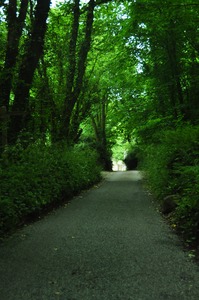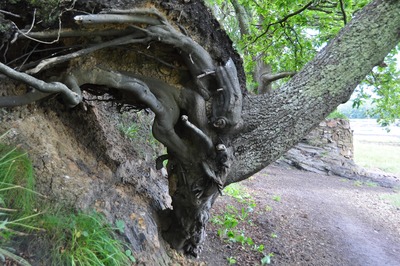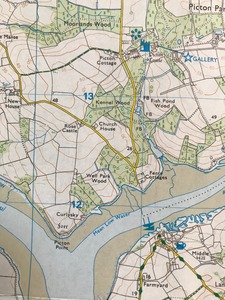In Sutherlands Footsteps
Rotie, Marie-Gabrielle. 2019. In Sutherlands Footsteps. [Digital] (Forthcoming)
![[img]](https://research.gold.ac.uk/23932/1.hassmallThumbnailVersion/DSC_8713.jpg)
|
Image
DSC_8713.jpg - Other Download (2MB) | Preview |
|
![[img]](https://research.gold.ac.uk/23932/9.hassmallThumbnailVersion/DSC_1525.jpeg)
|
Image
DSC_1525.jpeg - Other Download (3MB) | Preview |
|
![[img]](https://research.gold.ac.uk/23932/10.hassmallThumbnailVersion/IMG_3039.jpeg)
|
Image
IMG_3039.jpeg - Other Download (3MB) | Preview |
Abstract or Description
’For myself I believe that a new vision must grow out of reality – that the mysterious, intangible must be made immediate and tangible.’’ (Sutherland, 1982)
''After I had been to Wales I began to notice in landscape that almost everything, if one keeps ones eyes open, is potential material for painting; and more than that, certain elements of nature seem to me to have a kind of presence. I won’t go further that that, and say it was a human presence, or what kind of a certain presence it was; but it was a presence. Shadows had a presence, certain conformations of rock seemed to go beyond just being a rock, they were emanation’s, some kind of personality.’’
(Sutherland, 1982)
This culminative and in-process project comprises of films, photographic and web-based work that looks at the artist Graham Sutherlands paintings and the locations he painted at in Pembrokeshire (in the 1930s and again in the 1970's). Embodied dance responses are made at these specific sites within the Pembrokeshire National Parks and are documented on audio and visual mediums, and will be presented along with the map reference and a text. I am mainly working in a specific Estuary Location along the Cleddeau River where many of the trees and forms Sutherland painted over 100 years ago are still enduringly evident.
My Research references the phenomenology of images found in Gaston Bachelard (1958), which foregrounds our relation to the micro-world and also the expansion of the poetic ‘embodied image’ by Juhani Pallasmaa (2011) into questions of space/time and bodily perception. Merleau Ponty’s writing on embodiment in the art of painting, as further critiqued by Luce Irigarary, is particularly pertinent to this research and is complimented by practice-based methodologies drawn from extended acoustic sound practice, somatics and Butoh. The work continues investigative methodology and questions around ecological issues developed in ‘Encounters with Landscape' (https://research.gold.ac.uk/id/eprint/23931/) and intends to foreground Sutherlands undervalued ecological relevance to this century, with his attention to the micro world and the entanglement of human, nature and machines.
I first encountered Sutherlands works in 1976, age 9, when I was taken by my local Junior School, to see the Graham Sutherland Gallery at Picton Castle in Pembrokeshire; the gallery was specifically built to house a collection of works Sutherland wished to bequeath to the country that had given his work so much inspiration. Returning to the Estuary location and site many years later, I asked myself:
Could I have a direct relationship with the estuary/landscape, or was it always mediated by Sutherland's vision? Was I experiencing the place itself, or experiencing it through a veil of Sutherland interpretations? Or did Sutherland simply act like a conduit to make me see things anew, as they are in all their intensity? Without anthropomorphism, can we apprehend the intrinsic 'consciousness' of living forms?
How to translate the embodied reception of a painting and then transcribe that back into the place of its inspiration?
I draw also upon methodologies from Butoh, Somatics, Theatre/Archaeology (Pearson) and engage with the published writing on Sutherland, Sutherlands own writing, together with direct responses to his 'Welsh' paintings done in the two periods 1930s and then 1970's. In particular, I have sought to, literally and metaphorically, trace his footsteps and relocate specific areas in Pembrokeshire which so inspired him. In so doing, I aim to then translate both the place, the site, and the painted image, into a photographic, performative, sonic or textual response.
Uncannily, Sutherland studied engraving and art at Goldsmiths in the 1920's and my ongoing research will work with the old art building studio and research with Emeritus Professor Tim Crook (MCCS) to look at ways to awaken the ghost of Sutherland and bring something of the Pembrokeshire landscape into the building through walking/headphone based, audio visual works.
The resulting work will be published as a limited-edition artists book, and a print exhibition in Pembrokeshire. Please note this work is culminative and will be completed as a digital output on an interactive website and audio based headphone work, in 2026.
Selected Bibliography:
Bachelard, Gaston, The Poetics of Space (Boston: Beacon Press, 1969)
Sutherland, Graham, and Julian. Andrews, Correspondences : Selected Writings on Art(Haverfordwest: The Graham and Kathleen Sutherland Foundation, 1982)
IRIGARAY, Luce, and Helen A FIELDING, ‘Irigaray on Merleau-Ponty's Eye and Mind: To Paint the Invisible (and Interview by Helen Fielding)’, Continental Philosophy Review, 37.4 (2004), 389–405
Pallasmaa, Juhani, The Eyes of the Skin: Architecture and the Senses, 3rd ed. (Newark: Wiley, 2012)
|
Item Type: |
Digital |
| Departments, Centres and Research Units: |
|
| Date: |
30 May 2019 |
| Item ID: |
23932 |
| Date Deposited: |
31 Jul 2018 08:55 |
| Last Modified: |
06 Apr 2024 16:30 |
|
URI: |
View statistics for this item...
 |
Edit Record (login required) |

 Tools
Tools Tools
Tools


